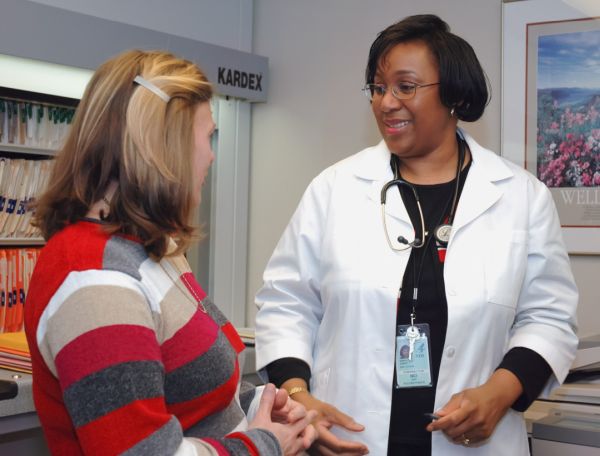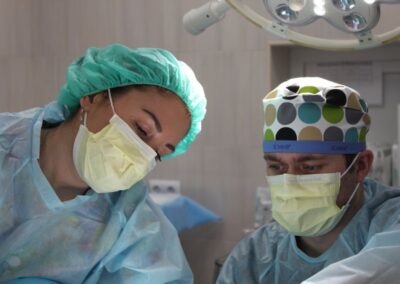Positive Steps to Decrease the Doctor-Patient Communication Gap
Communication is an essential part of the doctor-patient relationship (and the doctor-doctor relationship for that matter). Without effective communication, the doctor-patient relationship simply does not exist. Understandably, it can be one of the most challenging aspects of maintaining a healthy relationship and achieving the optimal clinical outcome.
Here’s what I’ve learned about fostering better communication between physicians and patients.
The Challenge of Doctor-Patient Communication
Effective doctor-patient communication is a challenge in healthcare for several reasons:
- The interaction is time limited. There is only a small amount of time that the physician and patient are together.
- The medical terminology is typically foreign and intimidating to the patient.
- The issues being discussed can be highly emotional and life-changing for the patient.
- The physician may not have received adequate training in effective communication.
- And finally, and this is not specific to healthcare, there can often be a gap between what one person says and the other person hears.
Everyone has played the game of “telephone” at a party. The first person tells the second person a story and it is repeated down the line. The last person to hear the story recites it to the group. By that time, the story is likely not even recognizable to the initial person. It is inevitable that there is some gap in what is communicated and what is heard. This gap accumulates through time and the number of people involved in the communication process.
A study done more than 20 years ago showed that the average patient retains at best only about 40-60% of the material that was communicated to them by the caregiver. The more information that is given in a visit, the less that is ultimately retained.
Furthermore, when a patient is given news of a potentially devastating illness, that person naturally is focused on that diagnosis, and may retain very little of what is said afterward. As a practical example, even though the physician may spend 30 minutes giving a detailed and comprehensive explanation of the disease, the treatment, and the prognosis, all the patient hears and focuses on is the word “CANCER.” The physician may have conveyed the information perfectly, but it was not retained by the patient. Thus, the communication is ultimately less productive.
One option is that the patient could record the visit. This is especially easy to do now with smart phones. Although there can be some benefit to this for the patient, it has its drawbacks. The physician may be much more defensive if the conversation is being recorded. This will distract from the value of that meeting and may be uncomfortable for both parties. If the patient secretly records the visit, it is indicative of severe trust issues, and probably means that the appropriate doctor-patient relationship does not exist in the first place.
Strategies to Improve Communication Between Physicians and Patients
Let’s consider some practical considerations for both parties that would best ensure that the information is correctly communicated between the physician and the patient:
1. The caregiver should make a mental note of the critical few things that need to be communicated to the patient during the encounter—and be sure to deliver that message. I was once taught in speaker training that an ideal speaker does three things: tells the person what they are going to say, says it, and then repeats to the person what was said. It takes triple reinforcing to maximize the chances that the person will retain the message after the communication is done. Those key issues must be told to the patient in exactly that manner as patient must retain those key messages accurately. The rest of the information is of lesser importance and could be dealt with further down in the process.
2. The patient should consider having a third person take notes and ask specific questions. That person may be more objective, and the patient can still maintain concentration and eye contact with the provider. Recording the visit should be discouraged unless both parties are completely comfortable with that option. Under no conditions should either party record the visit without the other party’s knowledge and consent.
3. The patient should be asked if they have any further questions or concerns prior to ending the visit.
4. Appropriate handout materials should be considered for likely medical issues that might occur. These materials can further explain general issues with diagnosis, treatment, and prognosis. Of course, these materials may not always apply to the unique needs of that patient, but for the most part, these collateral materials are appreciated by the patient, help delineate the pertinent issues, and may even save time and improve subsequent compliance.
A Few Steps Can Go a Long Way
There will always be a gap in what is communicated and what is retained by the listener. What the doctor says and what the patient hears can be very different, and potentially detrimental to the doctor-patient relationship and the ultimate clinical outcome. These few steps, which are easily taken, can go a long way toward reducing the gap that often inhibits doctor-patient communication




